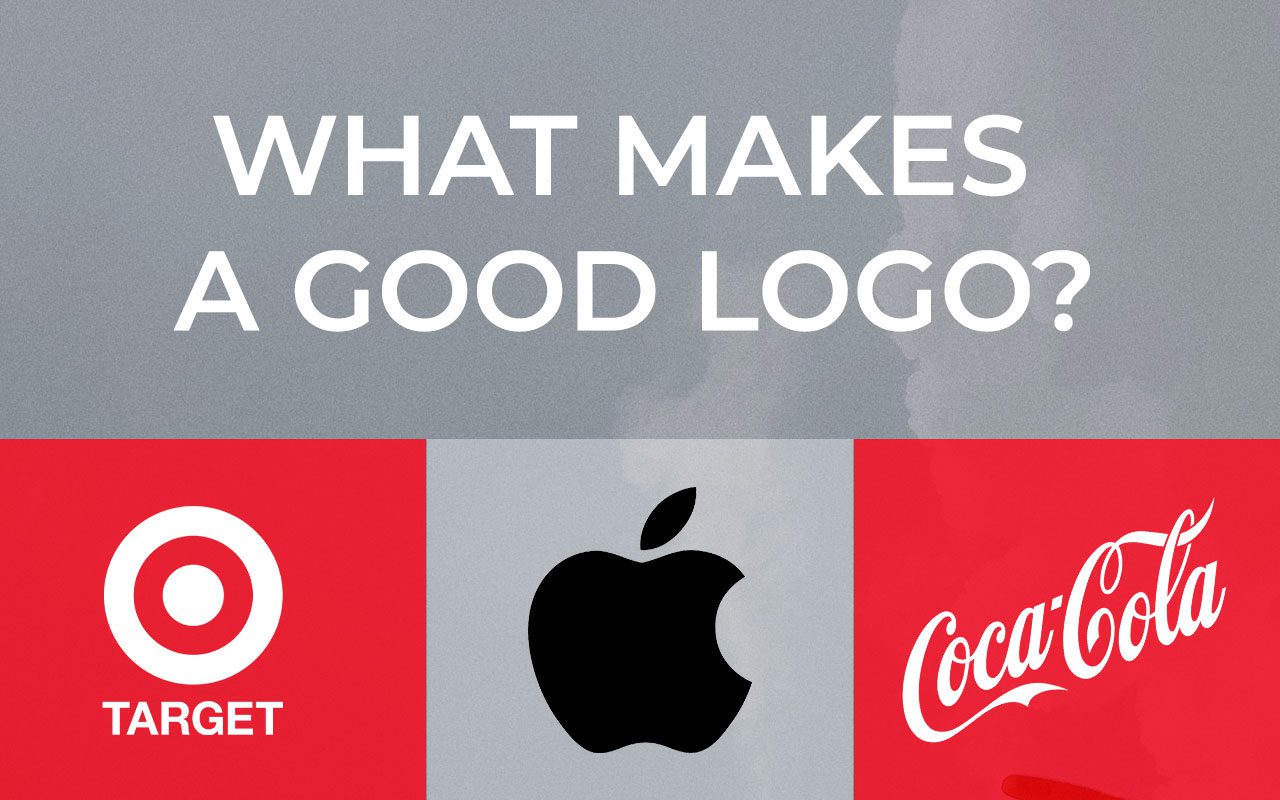
01 Oct What Makes Good Branding?
Apple. Coca-Cola. Target.
When you read each of these brand names, there is a good chance that the corresponding logo will also come to mind. That’s good branding! If we were to ask you what they all had in common, perhaps you’d say, “they are big, successful corporations.” You’d be correct. However, we’re looking for the answer: “they all have distinct and memorable branding.” Each of these iconic brands has stood the test of time. You might argue for different reasons why this success happened. But, again, we’d say that their company foundation started with a strong logo symbol that represented whom they wanted to be in the public domain. After all, a strong brand is the nucleus of a company’s success.
Why is a logo so important?
Well, when you meet a new person, the first thing they see is usually your face. If they cannot see your face, they might hear your voice. If they can’t see or listen to you, they may get an idea of who you are from your smell or interactions with them. These are all identifiers that represent the brand of the individual.
A logo for a business is no different. A corporation has a specific look, voice, and projected image. Unique imagery, such as the apple for the Apple Corporation, leaves an impact; it’s memorable and remains front of mind with their customers and on the radar of their target audience.
You don’t have to be Apple, Coca-Cola, or Target to be successful. The money would be nice, but even smaller businesses can impress with solid branding. Take Lemonade for an example. In insurance branding, it’s hard to differentiate yourself and create trust. Lemonade sticks out because it heavily uses the color pink, and its Instagram account is over-the-top creative!
The past two examples clearly show that a logo’s primary purpose is to identify with your company. To Paul Rand, one of the world’s most excellent graphic designers, “a logo is a flag, a signature, an escutcheon, a street sign. A logo does not sell (directly); it identifies. A logo is rarely a description of a business. A logo derives meaning from the quality of the thing it symbolizes, not the other way around. A logo is less important than the product it signifies; what it represents is more important than what it looks like. The subject matter of a logo can be almost anything.”
Does your brand make an impact?
Your brand should follow these basic criteria:
Simple
We’re talking uncomplicated, like the Nike swoosh. Even without words, Nike’s brand is unmistakably Nike. Nike is the Winged Goddess of Victory. The logo is derived from goddess’ wing, ‘swoosh,’ which symbolizes the sound of speed, movement, power, and motivation. This is great because the Nike logo is so strong that you can see it from your car as you drive 80mph past a billboard on the highway!
Communicates Core Values
Going back to Lemonade, their core values are right up front. There is no guessing. They state it on their website, on their social and in everything they do. They are “transparent,” and they make sure to tell us.
Appropriate
A simple way to understand these criteria is to consider the Toys“R” Us logo. This logo was designed to attract children. The youthful colors and the backward “R” remind us of how a young person might write a letter when first learning to write. Yet, this look would not work for a law firm because attention to detail is essential in law.
Memorable
This principle goes hand-in-hand with both of the previous two. Keeping your design simple yet appropriate makes it unique. A brand is exceptional when it elicits an emotion in you that you want to move toward. It could be funny, intense, or weird. For example, the gecko for Geico out in 2000, and it was strange and different but undeniably memorable. Also, maintaining consistency across all marketing channels keeps your brand consistent and impressive.
Timeless
Ultimately, the goal is longevity. Before brainstorming your logo, do some research. Reference past and present aesthetic trends and look at what your competition is doing with their brand. Branding should not be trendy; it should be able to stand the test of time and still be effective in 10, 20, or 50 years. After all, if you invest your time or money into your visual branding, you want something with staying power.
Branding and logo design can be tricky. So, give us a call; we would love to help.




Sorry, the comment form is closed at this time.